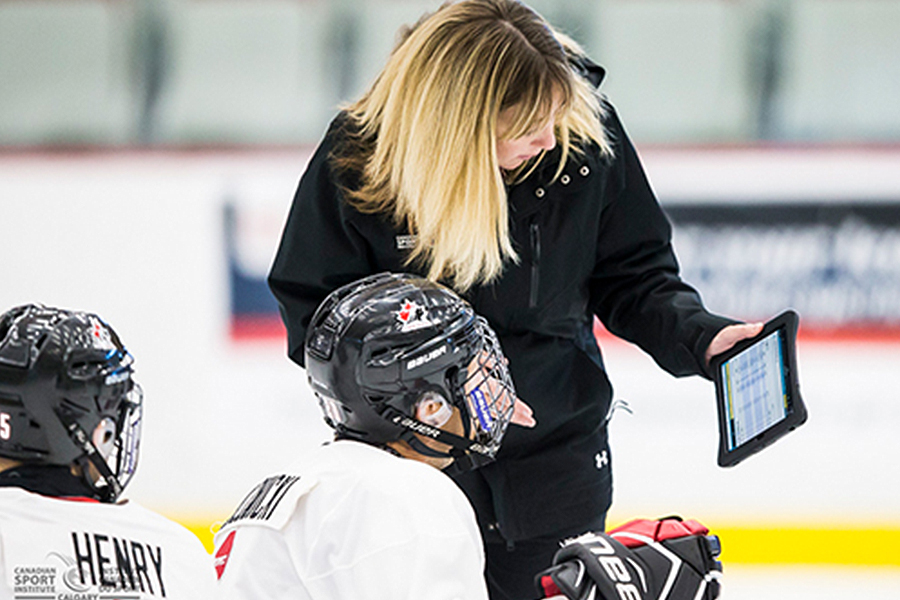
In the world of sport, if you’re not trying to get better you might actually be getting worse – because it’s almost guaranteed that the athletes who are your competition are getting better while you are standing still. A growth mindset then, is critical for development, whether you are an athlete, coach, service provider or sport leader.
This is the philosophy behind professional development at CSI Calgary and the reason that Bryan Yu and Erin Sargent made their way to the 8th VISTA Conference, held in Toronto in late September. Yu and Sargent work with Canada’s para hockey team (sledge hockey) – Yu as the head strength and conditioning coach and Sargent as the lead physiologist.
The VISTA conference, hosted this year by the Canadian Paralympic Committee and the CSI Ontario, was designed to provide a platform for sport scientists and researchers to meet with experts in the field of sport for athletes with impairments to discuss, exchange, and gain advanced knowledge in this area.
The goals of the conference were to provide a forum for exchange on current information, research and expertise related to Paralympic Sport and the Paralympic Movement and to enhance and promote cross-disciplinary professional interaction among sport scientists, coaches, athletes and sport administrators.
For Yu, there was much to be learned from experts in other sports. “I learned a lot about the complexity of the classification system and how much research has been done to support how athletes are classified based on their disability,” he says.
Para hockey doesn’t have an overly complicated classification system but Yu says learning about it can still help because he can communicate with other professionals in para sport. “The key thing in our field is to be able to broaden our knowledge by sharing with others,” he says.
Yu also learned about how wheelchair technologies and set-up are used to optimize performance, which he says he can apply to para hockey by looking at things like the depth of the bucket on the sledge and how that would impact performance.
Sargent says she learned about how to manage individual disabilities and integrate the athlete’s needs into their programming. “For example, an athlete with a spinal cord injury may have a more difficult time adapting to changes in body temperature due to impacts to their nervous system,” she explains. “There are strategies for managing heat and keeping cool.”
Both Yu and Sargent stressed the importance of the need to develop para sport beyond high performance at a grassroots level, something they are planning to do with para hockey once the 2018 Paralympics are over.
“There are many young athletes in the sport but there is a big gap in their development compared to the national team,” says Yu. He adds that the VISTA conference highlighted for him that other countries are doing this and that it needs to be done here in Canada too.
Canada is one step ahead of the world when it comes to supporting para athletes with sport science, though. “Canada is in a very good place compared to a lot of other countries because of connections between the National Sport Organization and the CSI network,” says Sargent. “This offers a line of support to the teams and athletes that wouldn’t otherwise be available if the NSO’s were on their own.”
Clearly, Yu and Sargent have the growth mindset required to push para hockey to the top, and although there is no guarantee of success, they are on the right track.
Canadian Sport Institute Calgary: @csicalgary
Written by Kristina Groves: @kngrover
Photo by: Dave Holland @csicalgaryphoto
12/10/17
